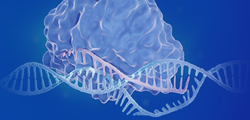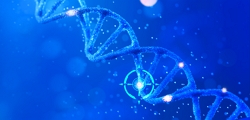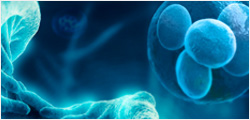-
REAGENT SERVICES
Hot!
-
Most Popular Services
-
Molecular Biology
-
Recombinant Antibody/Protein
-
Reagent Antibody
-
CRISPR Gene Editing
-
DNA Mutant Library
-
IVT RNA and LNP Formulations
-
Oligo Synthesis
-
Peptides
-
Cell Engineering
-
- CRISPR/Cas9 sgRNA
- CRISPR/Cas12a crRNA
- Prime Editing Guide RNA
- Base Editing Guide RNA
- HDR Templates
- gRNA + HDR Template Design Tools
- cGMP Guide RNA
- cGMP HDR Templates
- CRISPR/Cas Proteins
- CAR-T Knock-in Optimization Kit
- CRISPR Plasmids
- CRISPR gRNA Plasmid Libraries
- CRISPR Cell Lines
- Microbial Genome Editing
-
-
PRODUCTS
-
Most Popular Reagents
-
 Instruments
Instruments
-
Antibodies
-
ELISA Kits
-
Protein Electrophoresis and Blotting
-
Protein and Antibody Purification
-
Recombinant Proteins
-
Molecular Biology
-
Stable Cell Lines
-
Cell Isolation and Activation
-
 IVD Raw Materials
IVD Raw Materials
-
 Therapy Applications
Therapy Applications
-
Resources
-
- Pharmacokinetics and Immunogenecity ELISA Kits
- Viral Titration QC ELISA Kits
- -- Lentivirus Titer p24 ELISA KitHot!
- -- MuLV Titer p30 ELISA KitNew!
- -- AAV2 and AAVX Titer Capsid ELISA Kits
- Impurity Test ELISA Kits
- -- BSA ELISA Kit, 2G
- -- Cas9 ELISA KitNew!
- -- Protein A ELISA KitNew!
- -- His tagged protein detection & purification
- -- dsRNA ELISA Kit
- -- Endonuclease ELISA Kit
- COVID-19 Detection cPass™ Technology Kits
-
- Automated Maxi-Plasmid PurificationHot!
- Automated Mini-Plasmid PurificationNew!
- PCR Reagents
- S.marcescens Nuclease Benz-Neburase™
- DNA Assembly GenBuilder™
- Cas9 / Cas12a / Cas13a Nucleases
- Base and Prime Editing Nucleases
- GMP Cas9 Nucleases
- CRISPR sgRNA Synthesis
- HDR Knock-in Template
- CRISPR Gene Editing Kits and Antibodies
-
![AmMag™ Quatro Automated Plasmid Purification]() AmMag™ Quatro automated plasmid purification
AmMag™ Quatro automated plasmid purification
-
![Anti-Camelid VHH]() MonoRab™ Anti-VHH Antibodies
MonoRab™ Anti-VHH Antibodies
-
![ELISA Kits]() ELISA Kits
ELISA Kits
-
![Precast Gels]() SurePAGE™ Precast Gels
SurePAGE™ Precast Gels
-
![Quatro ProAb Automated Protein and Antibody Purification System]() AmMag™ Quatro ProAb Automated Protein and Antibody Purification System
AmMag™ Quatro ProAb Automated Protein and Antibody Purification System
-
![Target Proteins]() Target Proteins
Target Proteins
-
![AmMag™ Quatro Automated Plasmid Purification]() AmMag™ Quatro automated plasmid purification
AmMag™ Quatro automated plasmid purification
-
![Stable Cell Lines]() Stable Cell Lines
Stable Cell Lines
-
![Cell Isolation and Activation]() Cell Isolation and Activation
Cell Isolation and Activation
-
 IVD Raw Materials
IVD Raw Materials
-
![Quick
Order]() Quick Order
Quick Order
-
![Quick
Order]() Quick Order
Quick Order
- APPLICATIONS
- RESOURCES
- ABOUT US
- SIGN IN My Account SIGN OUT
- REGISTER

![Amino Acid Code Amino Acid Code]()
at Related Biological Terms
This Biology terms dictionary provides query services for biology and biochemistry terms. Please enter the biology or biochemistry terms you want to search.
List by Alphabet: A B C D E F G H I J K L M N O P Q R S T U V W X Y Z
at Related Biological Terms:
A gene whose expression is associated with apoptosis, e.g. a Ca2+-activated endonuclease that cleaves exposed regions of chromatin to produce nucleosome-sized fragments. (see also oncogene)
see death-associated protein
A protein that induces apoptosis. It binds to a death receptor on the plasma membrane, resulting in an intracellular cascade of events that acitivates caspases and eventually causes apoptosis.Cohen, G. (2000) The Biochemist 22(2), 25-27
A thin filament of muscle, i.e. F-actin, to which are attached globular heads. The S1 fragments of myosin resemble in electron micrographs a string with attached arrowheads, all angled towards one end of the string.
(see coincidence painting (chromosome painting))
The oxidation of a compound by removal of equal numbers of protons and electrons, usually two of each.
A mutation caused by the absence of one of more nucleotides in the DNA sequence.
The destruction of the ordered folding of a protein or nucleic acid that is required for its normal function. Protein denaturation often involves a change from a specific globular or fibrous conformation to a random coil; nucleic acid denaturation often involves the dissociation of a duplex into single strands. (see also native structure) Related tool: molecular biology tools
(= sodium dodecyl sulphate/polyacrylamide-gel electrophoresis (SDS/PAGE))
A method for detection of single base substitutions in DNA fragments. Putative mutant and normal double-stranded DNA fragments are applied along one edge of an agarose gel slab that contains a denaturing agent (e.g. urea and formamide) in a gradient perpendicular to the direction of electrophoresis. At a low concentration of the denaturant the fragments are more mobile, and at high concentration they are unfolded and therefore less mobile. The electrophoretic band describes a sigmoid curve on the developed gel; the denaturant concentration represents the mid-point of the curve and is characteristic of the sequence. Introduction of a GC-rich sequence, which is very stable to denaturation and thus acts as a GC clamp, into the DNA allows detection of mutations in the more stable regions of the DNA. Rossiter, B.J.F. and Caskey, C.T. (1990) J. Biol. Chem. 265, 12753-12756 Recommended reading: next generation sequencing
-
Top Search
-
Hot Glossary
-
Antibody
If you know of any terms that have been omitted from this glossary that you feel would be useful to include, please send detail to the Editorial Office at GenScript: website@genscript.com
If your term is adopted, we will send 1,000 EzCoupon points to your GenScript account.
-





































